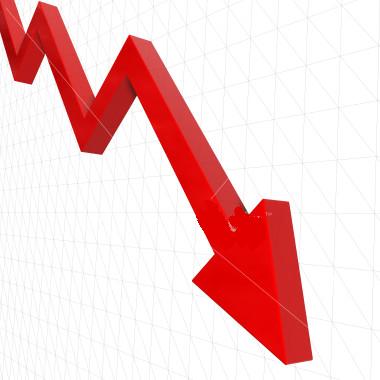
Earlier this year, the ministry of statistics and programme implementation revised the way the gross domestic product(GDP) is calculated. Such a revision is necessary every few years, given that the structure of the economy keeps changing. Over and above that, the datasets that are used to compute the GDP also keep improving. Given this, the change is necessary. This revised method led to the economic growth for 2013-2014 being revised to 6.9% against the earlier 5%. In fact, using the new model, the growth projected for 2014-2015 was forecast to be at 7.4%. Earlier, the Reserve Bank of India (RBI) had projected an economic growth of 5.5% for 2014-2015.
The ruling politicians have caught on to the new economic growth number, with finance minister Arun Jaitley even talking about India returning to double digit economic growth soon. As he said in the budget speech in February: “Based on the new series, real GDP growth is expected to accelerate to 7.4%, making India the fastest growing large economy in the world…We have turned around the economy dramatically, restoring macro-economic stability and creating the conditions for sustainable poverty elimination, job creation and durable double-digit economic growth. Domestic and international investors are seeing us with renewed interest and hope.”
Jaitley’s comment notwithstanding, there has been extensive scepticism about the new growth number. Arvind Subramanian, the chief economic adviser to the ministry of finance in an interview to the Business Stanard said: “This is mystifying because these numbers, especially the acceleration in 2013-14, are at odds with other features of the macro economy. The year 2013-14 was a crisis year – capital flowed out, interest rates were tightened and there was consolidation – and it is difficult to understand how an economy’s growth could be so high and accelerate so much under such circumstances.”
Andy Mukherjee writing for Reuters made a very pertinent point when he said: “No large economy has pulled off…such a handsome pickup in output[GDP],to [an]…analysis of 189 nations over 33 years.” Mukherjee was talking about the jump in economic growth in 2013-2014, from the earlier stated 5% to 6.9% as per the new method.
Now even the RBI has questioned the credibility of the new method of measuring the GDP. In the monetary policy report dated April 2015 and released on April 7, the central bank said: “The new GDP data…came as a major surprise as it produced significantly higher growth at constant prices.”
“The divergence between the new series and the old series in the pace of growth of the manufacturing sector has turned out to be stark; in particular, the robust expansion of manufacturing portrayed in the new series is not validated by subdued corporate sector performance in Q3 and still weak industrial production,” the RBI said.
For the period October to December 2014 (or what is referred to as Q3 by the RBI) both corporate profit and sales remained weak. A newsreport in the Business Standard points out that “aggregate net profit of 2,941 companies” declined by 16.9% in comparison to October to December 2013. The sales growth also has been the weakest in at least 12 quarters, the report points out. This clearly shows that the manufacturing sector continues to remain in a weak zone.
And manufacturing is not the only sector which remains in trouble. As the RBI report points out: “In the financial and real estate sub-sector, the high growth of 13.7 per cent at constant prices is not corroborated by the observed sluggishness in key underlying variables such as credit and deposit growth, housing prices, rent and most importantly, the subdued performance of real estate companies in terms of sales growth and earnings.”
Lending by banks has grown by a minuscule 9.5% in the last one year, data from the RBI points out. In comparison, the growth in deposits collected by banks has been at 11.4%. What also needs to be taken into account here is that the deposit growth has been on a higher base. Both deposit growth as well as loan growth of banks is at a multi-decade low. So, how is the finance as well as real estate sector growing at 13.7%, is a question that RBI is asking?
The RBI report then goes on to say: “Data revisions and their after-effects are not unique to India, but the magnitude of the gap in real GDP growth rates between the old and the new series for 2013-14 and 2014-15 has complicated the setting of monetary policy. Undoubtedly, the new GDP data embody better coverage and improved methodology as per international best practices. Yet these data cloud an accurate assessment of the state of the business cycle and the appropriate monetary policy stance.”
There are multiple things that the central bank is saying here. First, is that it doesn’t really believe in the new GDP number. And that has made the setting of the monetary policy more difficult for the RBI. If India is currently growing at more than 7%, then the RBI should not be cutting the repo rate, but raising it. Repo rate is the rate at which RBI lends to banks and acts as a sort of a benchmark to the interest rates that banks pay for their deposits and in turn charge on their loans.
Nevertheless, all real time data seems to suggest that India is not growing at higher than 7%.
The broader point here is that if the RBI does not believe the new GDP number, why would anyone else do as well? As Ruchir Sharma of Morgan Stanley recently wrote in the Financial Times: “India’s latest growth data look less like the work of a calculating political machine than the result of bungling… This is a classic example of how Indian bureaucrats can take something that is not broken and fix it until it is…It’s hard to see how India’s economy could have been accelerating when the government was restraining its spending, investment was weak and credit was barely growing.” This clearly does not show India in a good light.
The situation needs to be set right if India does not want to go the Chinese way on this front. Analysts have questioned the validity of Chinese data for a very long time. India clearly needs to avoid going that way.
The column originally appeared on The Daily Reckoning on Apr 9, 2015

